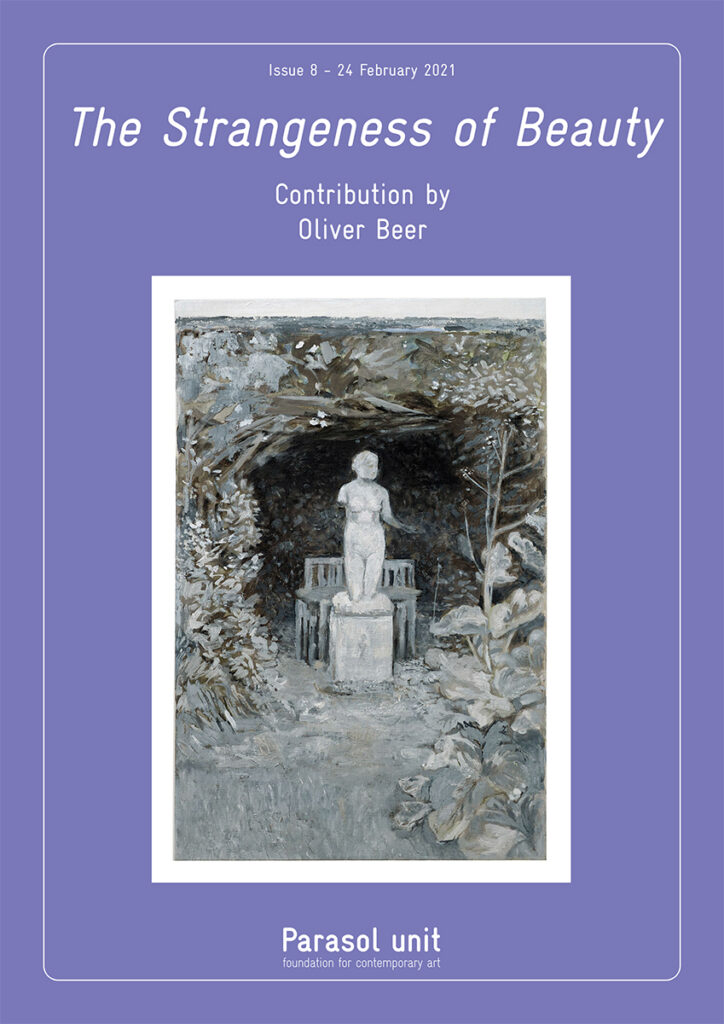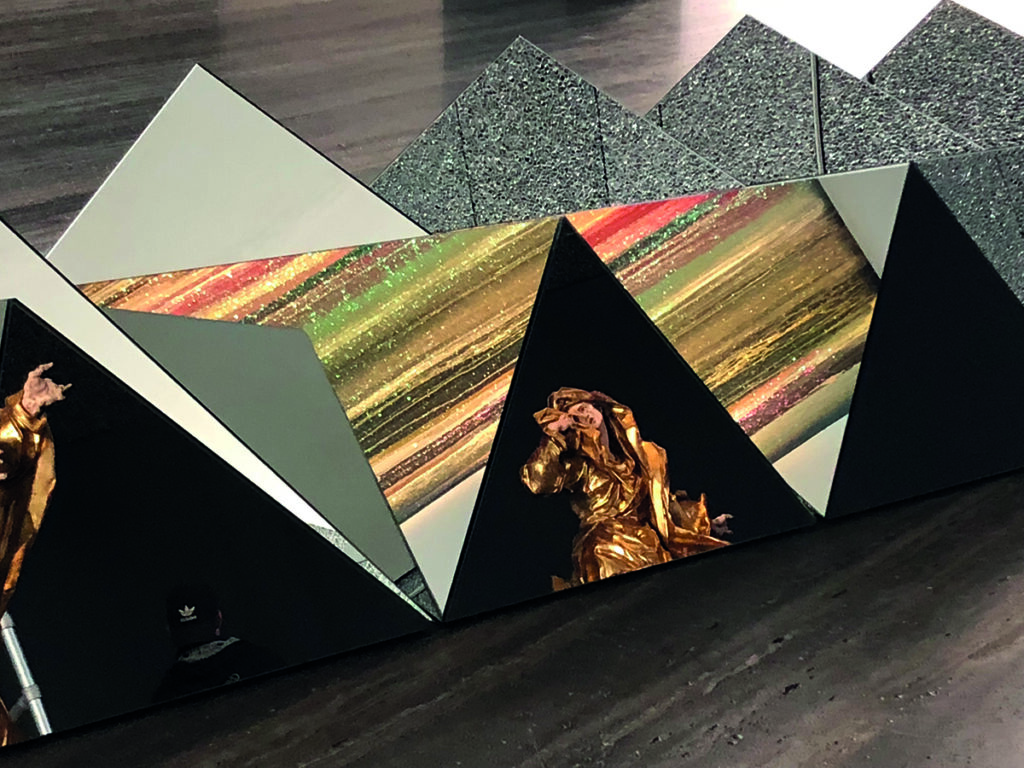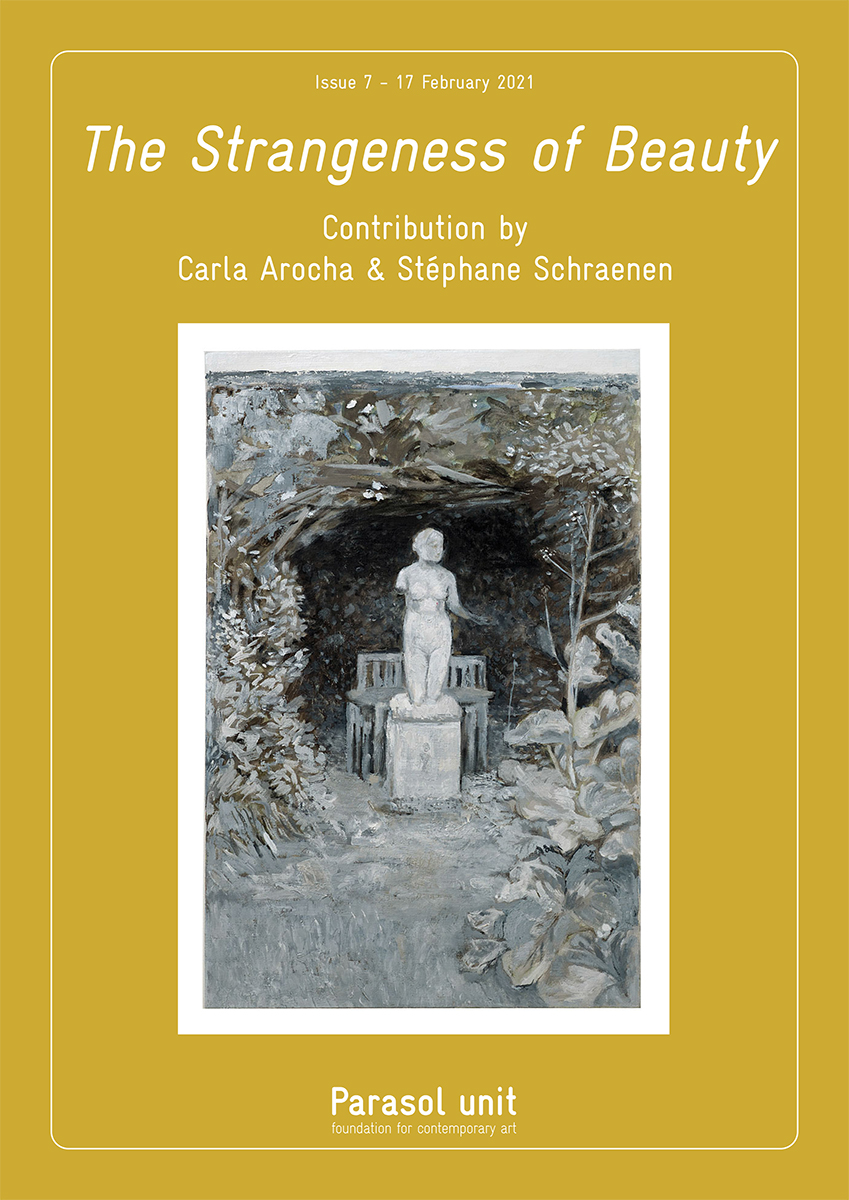
The Strangeness of Beauty – Issue 7 – Carla Arocha & Stéphane Schraenen
17-23 February 2021
View the full issue
Diversity of ‘Reflexions’ on Carla Arocha & Stéphane Schraenen
Within human civilisation, beauty/truth has been widely researched, reflected upon and written about, yet whenever one tackles the topic anew, one has the impression that the discussion is far from exhausted. Certainly, I am not doing it justice by elaborating only briefly on this incredibly complex and fascinating subject. It is generally accepted that in the Western world, aesthetics and beauty were already being discussed some 2,500 years ago by the Greek philosophers, including Plato, Xenophon and Aristotle. In fact one of them, Xenophon, equated beauty with goodness. Fast forward to the age of the Enlightenment and after, when numerous European philosophers were reconsidering the topic. For example, Immanuel Kant (1724–1804) gave considerable thought to it in his Critique of the Power of Judgement and saw beauty as a concept far above what could be judged by the senses. Kant also made a clear distinction between beauty and the sublime, which probably introduced new ramifications to the, until then, accepted concept of beauty. Beauty was not only good and harmonious but could equally be awe-inspiring, perhaps even frightening. Now that beauty had gained its independence from the sublime, another German philosopher, Georg Wilhelm Friedrich Hegel (1770–1831) considered beauty to exist only where something sensuous was mediated by the spirit, and of course we should not forget the words of Edgar Allan Poe who wrote, There is no exquisite beauty . . . without some strangeness in the proportion. And more recently, Roger Scruton, in his book Beauty, writes, Only in the course of the nineteenth century, and in the wake of Hegel’s posthumously published lectures on aesthetics, did the topic of art come to replace that of natural beauty as the core subject matter of aesthetics.
Meanwhile, natural beauty seemed to have taken its own faith to the concept of the sublime and ignited Romanticism. Within visual art, I am thinking of paintings that celebrated the sublime in wilderness, such as those by Caspar David Friedrich, J.M.W. Turner, Thomas Cole, Frederic Edwin Church and others. Scruton further elaborates that after Charles Baudelaire and Friedrich Nietzsche, the Xenophon concept of goodness and beauty diverged, and certainly in the field of visual art we can name several agents of change – notably Marcel Duchamp, Andy Warhol and, as discussed in Issue 4 of The Strangeness of Beauty, Jeff Koons – who played a decisive role in the understanding and propagation of the concept of beauty in art within contemporary society today.
Now with these variants at play and throughout the peculiar months of the Covid-19 pandemic, one of my persistent thoughts has been, what does beauty/truth mean to artists? In the light of Thomas Hirschhorn’s thought-provoking text published in the first issue of The Strangeness of Beauty, how should we define beauty in a work of art? Is the beauty to be found in the appearance of a work, in its subject, in its execution, in external interactions as evident in the work of Arocha & Schraenen as shown here, or in the eye of the beholder? How subjective and conditional, indeed, can an artwork be?
I have no doubt that Arocha & Schraenen’s thoughts and images will introduce us to some fantastic thoughts on the subject and naturally I cannot thank them enough for the time they have invested in opening our eyes and minds to another way of seeing and the effort they have made to share their thoughts with us.
Ziba Ardalan
Founder, Artistic and Executive Director
Carla Arocha & Stéphane Schraenen
REFLEXION?
Reflection noun
![]()
(also British English, archaic reflexion)
1. an image in a mirror, on a shiny surface, on water, etc.
2. the action or process of sending back light, heat, sound, etc. from a surface
3. a sign that shows the state or nature of something
4. careful thought about something, sometimes over a long period of time
5. your written or spoken thoughts about a particular subject or topic
6. an account or a description of something
Oxford Dictionary
A very relevant question. We live at a moment in history when attractions and beliefs lead to unquestioned and potentially destructive reactions and actions.
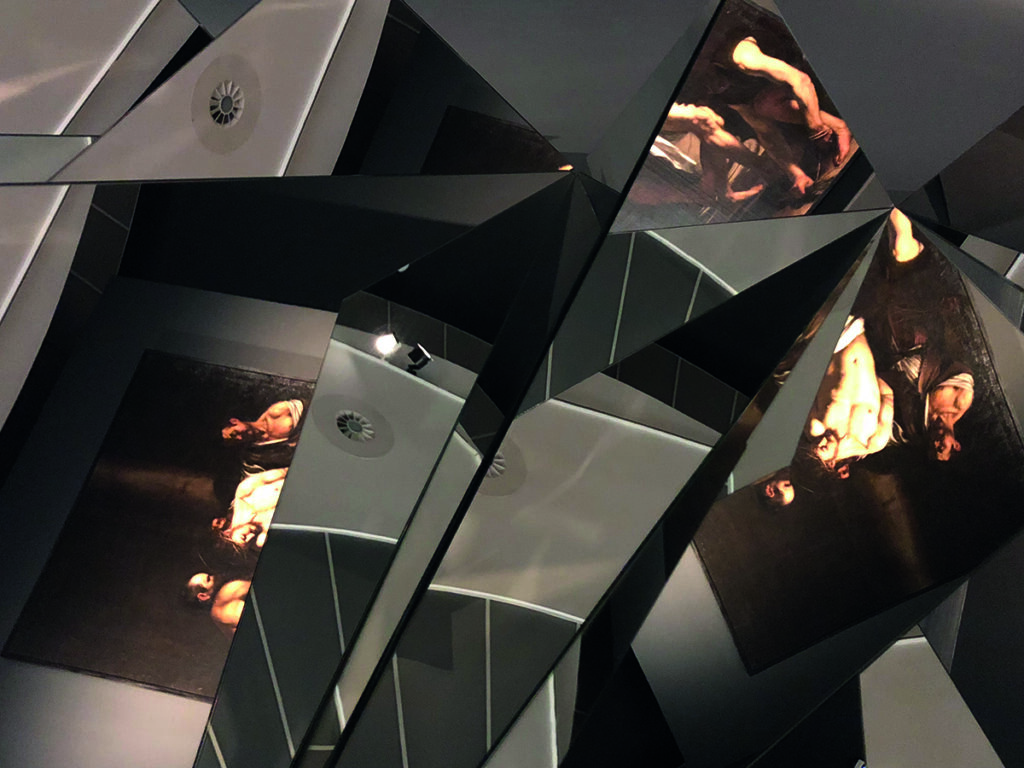
From very early on in our practice we have been concerned with this question. Now more than ever it seems incredibly poignant to reflect upon what we are attracted to and it could go as far as our trying to measure consequences.

While in time, we humans do not quite understand what it is that attracts us, what it is that seduces us, as a means even of survival. Belief needs questioning. Perhaps it is what makes a small contribution to ourselves as individuals and as individuals as part of society.
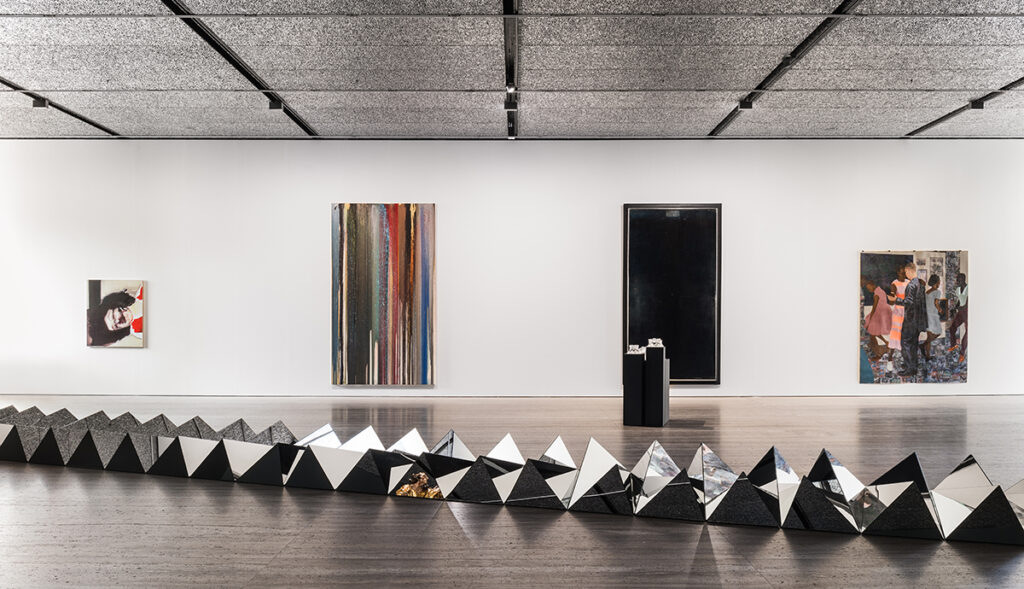
The mirror as a common object functions as a medium that attracts and repulses at the same time. The repulsion varies from viewer to viewer as it fractures one’s image along with all else that crosses its path.
The physical and intellectual experience in contrast to the circumstantial location of an individual amounts to an assertion that merits evaluation.
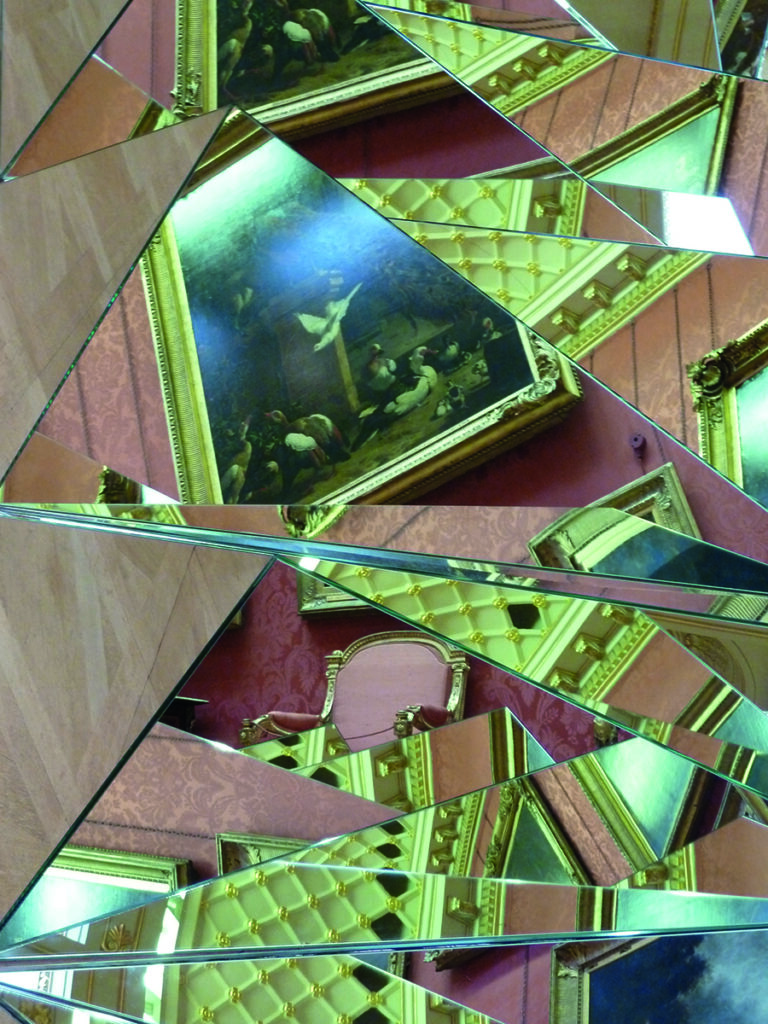
Images
Carla Arocha & Stéphane Schraenen, Circa Tabac, 2007
Glass mirror and steel, 57 x 1300 x 150 cm (22½ x 511¾ x 59 in)
Courtesy of the artists
Installation views (top to bottom)
Sanguine. Luc Tuymans on Baroque, Fondazione Prada, Milan, 2018
Carla Arocha & Stéphane Schraenen, John Armleder, Johan Georg Pinsel and Rem Koolhaas*
Sanguine/Bloedrood. Luc Tuymans on Baroque, M HKA , Antwerp, 2018
Carla Arocha & Stéphane Schraenen and Michelangelo Merisi da Caravaggio and Michel Grandsard
Brussels Biennale I, National Bank of Belgium, Brussels, 2008
Carla Arocha & Stéphane Schraenen and Marcel Van Goethem
Sanguine. Luc Tuymans on Baroque, Fondazione Prada, Milan, 2018
Carla Arocha & Stéphane Schraenen, Marlene Dumas, John Armleder, Yutaka Sone, Thierry De Cordier, Njideka Akunyili Crosby, Johan Georg Pinsel and Rem Koolhaas*
The Wallace Collection, London, 2011
Carla Arocha & Stéphane Schraenen, Melchior d’Hondecoeter and Thomas Ambler
All images © Carla Arocha & Stéphane Schraenen except * photograph Delfino Sisto Legnani and Marco Cappelletti, courtesy Fondazione Prada.
Next Issue
The Strangeness of Beauty
Issue 8, 24 February 2021
Featuring a contribution by
Oliver Beer
